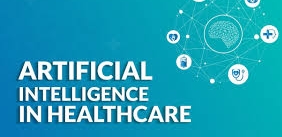Health care in the United States, historically focused on encounter-based care and treating illness as it arises rather than preventing it, is now undergoing a sweeping transformation toward a more population health based approach. This transformation is happening via a series of changes in reimbursement. Among these changes are multiple eras of managed care and capitated population management explorations and increases in reimbursement for value-based care and prevention, both of which attempt to manage the overall health of the patient beyond treatment of illness (ASTHO, 2019; CMS, 2019; Kissam et al., 2019; Mendelson et al., 2017). Even so, U.S. health care expenditures continue to rise without corresponding gains in key health outcomes when compared to many similar countries.
To assess where and how artificial intelligence (AI) may provide opportunities for improvement, it is important to understand the current context of and drivers for change in health care. AI is likely to promote automation and provide context-relevant information synthesis and recommendations (through a variety of tools and in many settings) to patients, “fRamilies” (friends and family unpaid caregivers), and the clinical team. AI developers and stakeholders should prioritize ethical data collection and use, and support data and information visualization through the use of AI (Israni and Verghese, 2019).
Technology innovations and funding are driven by business criteria such as profit, efficiency, and return on investment. It is important to explore how these criteria will influence AI–health care development, evaluation, and implementation. This reality is further challenged by U.S. public and government views of health and health care, which oscillate between health care as social good and health care as economic commodity (Aggarwal et al., 2010; Feldstein, 2012; Rosenthal, 2017).
These considerations are likely to drive some clear use cases in health care business operations: AI tools can be used to reduce cost and gain efficiencies through prioritizing human labor focus on more complex tasks; to identify workflow optimization strategies; to reduce medical waste (failure of care delivery, failure of care coordination, overtreatment or low-value care, pricing failure, fraud and abuse, and administrative complexity); and to automate highly repetitive business and workflow processes (Becker’s Healthcare, 2018) by using reliably captured and structured data (Bauchner and Fontanarosa, 2019).
When implementing these tools, it is critical to be thoughtful, equitable, and inclusive to avoid adverse events and unintended consequences. This requires ensuring that AI tools align with the preferences of users and with end targets of these technologies, and that the tools do not further exacerbate historical inequities in access and outcomes (Baras and Baker, 2019).
Driven by a shift to reimbursement and incentives that support a population
health management approach rather than a fee-for-service approach, innovation in AI technologies are likely to improve patient outcomes via applications, workflows, interventions, and support for distributed health care delivery outside a traditional brick and mortar, encounter-based paradigm.
The challenges of data accuracy and privacy protection will depend on whether AI technologies are regulated as a medical device or classed as an entertainment application.
These consumer-facing tools are likely to support fundamental changes in interactions between health care professionals and patients and their caregivers. Tools such as single-lead electrocardiogram (ECG) surveillance or continuous blood glucose monitors will transform how health data are generated and utilized. They offer the opportunity to incorporate social determinants of health (SDoH) to identify patient populations for target interventions to improve outcomes and reduce health care utilization (Lee and Korba, 2017).
Because SDoH interventions are labor-intensive, their scalability is poor. AI may reduce the cost of utilizing SDoH data and provide efficient means of prioritizing scarce clinical resources to impact Sdoh (Basu and Narayanaswamy, 2019; Seligman et al., 2017).
All this presumes building solutions for health care challenges that will truly
benefit from technological solutions, versus technochauvinism—a belief that
technology is always the best solution (Broussard, 2018).






